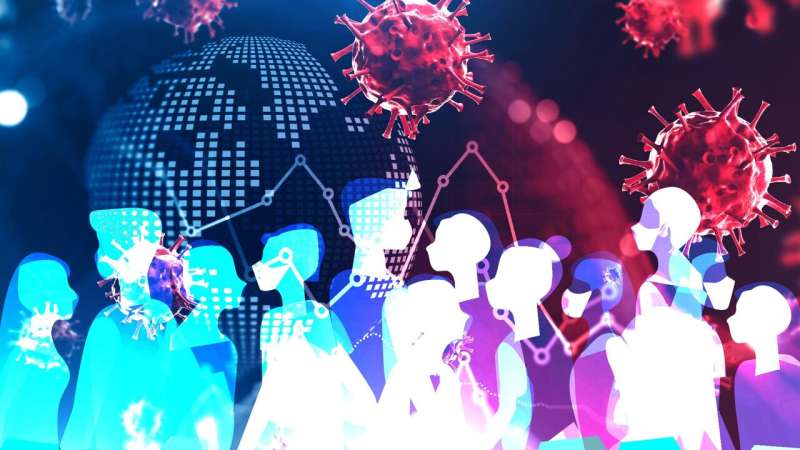This article has been reviewed according to Science X's editorial process and policies. Editors have highlighted the following attributes while ensuring the content's credibility:
fact-checked
peer-reviewed publication
trusted source
proofread
Antigen testing can reduce, but not eliminate, the risk of COVID-19 clusters, according to mathematical model

A research group has created a new model to calculate the probability of the occurrence of localized clusters caused by novel coronavirus infections. Led by Shingo Iwami at Nagoya University with collaborators in the United Kingdom and South Korea model, they revealed that screening of infected persons by antigen testing is effective in significantly reducing the probability of cluster occurrence. However, their findings also suggest that it is not sufficient to prevent clusters caused by highly infectious mutant strains, such as omicron.
Iwami and his colleagues published their study in Proceedings of the National Academy of Sciences.
With the availability of COVID-19 vaccines and population immunity, countries around the world are seeking to resume social activities while also trying to prevent the spread of infection. However, outbreaks of new strains of the coronavirus, associated with increased infectiousness and evasion of existing immunity, continue to be a threat. In several countries, new infections are increasing as the northern hemisphere enters the autumn and winter months.
Even after three years of the coronavirus, people continue to worry about clusters. Especially, the spread of infection within schools and workplaces continues to cause disruption. "One way to reduce the risk of clusters is to screen infected people by periodic antigen tests," said Iwami.
"However, although it may be possible to identify and isolate infected persons at the earliest possible stage, the impact of such screening on the probability of cluster occurrence was unknown because no calculation method had been established."
The research group's solution was to use a multi-scale modeling framework to calculate the probability of cluster occurrence after considering factors such as antigen testing and vaccination. Researchers in science and engineering are increasingly using similar approaches to study complex systems.
"We can reduce the probability of cluster occurrence by screening infected persons, depending on the timing of the antigen test and the associated false negative rate," said Iwami. "The results also suggest that introducing antigen testing is particularly effective in places where a high proportion of transmissions are presymptomatic, such as schools and workplaces."
However, their findings suggest that screening for infected people alone cannot reduce the probability of cluster occurrence to 0% if it is not possible to completely isolate all detected persons. Therefore, in high-contact settings, or when a new variant emerges, mitigations other than antigen tests will be necessary.
According to Iwami, "The study provides important information on current concerns about the re-emergence of infectious cases and the emergence of new mutant strains in Japan and abroad. If we can calculate the probability of clusters in populations with different characteristics, we can effectively deploy limited infectious disease control resources."
"Our findings support the use of antigen testing alongside booster vaccination campaigns and other infection control measures as an effective approach to strike a balance between future social activities and the implementation of robust infectious disease control measures."
The formula for the probability of cluster occurrence developed in this study is not limited to novel coronavirus infections but could apply to other infectious diseases. In the future, this may be an effective tool for developing infectious disease countermeasures and minimizing the risk of cluster outbreaks in hospitals and elderly care facilities.
More information: William S. Hart et al, Analysis of the risk and pre-emptive control of viral outbreaks accounting for within-host dynamics: SARS-CoV-2 as a case study, Proceedings of the National Academy of Sciences (2023). DOI: 10.1073/pnas.2305451120




















